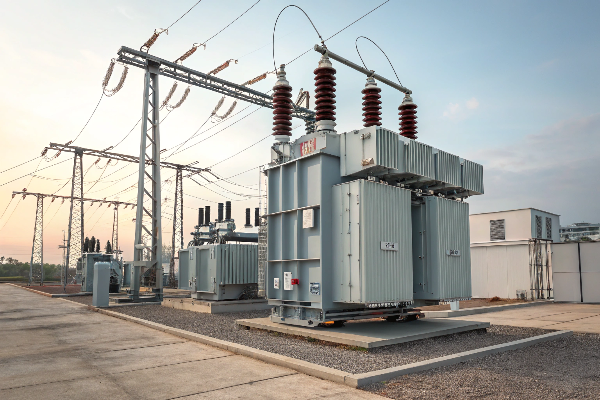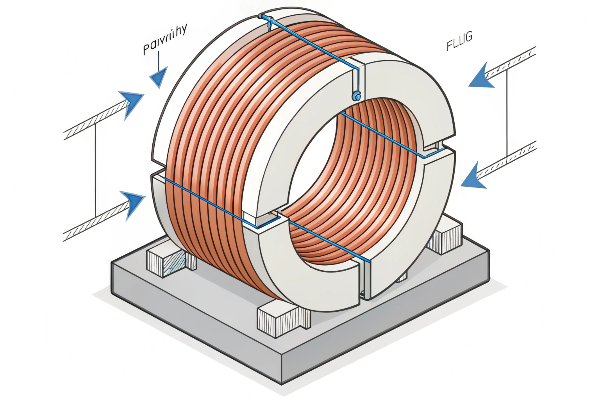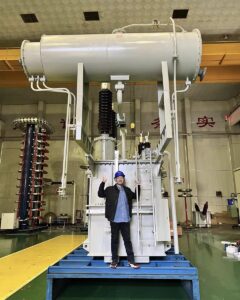Many people believe transformers generate electricity when stepping up voltage. This misconception creates confusion about power distribution systems, potentially leading to dangerous assumptions about electrical equipment.
Transformers do not produce energy when stepping up voltage. They merely change the relationship between voltage and current while maintaining the same power (minus small efficiency losses). A transformer transfers electrical energy between circuits through electromagnetic induction without creating new energy.

Understanding transformer operation is crucial for anyone working with electrical systems. Let's look deeper at how these devices work and clear up common misconceptions about voltage transformation and energy production.
Do Step Up Transformers Increase Energy?
Many people assume that higher voltage means more energy, leading to confusion about transformer functionality and potentially dangerous misconceptions about electrical systems.
Step-up transformers do not increase energy. They increase voltage while proportionally decreasing current, keeping power essentially constant (minus small efficiency losses). The transformer merely changes the form of electrical delivery rather than generating additional energy.
 step up transformer diagram](https://voltoritransformer.com/wp-content/uploads/2025/08/image-2-step-up-transformer-diagram-create-a-fl.png)
Transformers work on the principle of electromagnetic induction, not energy generation. When we examine a transformer's operation, we find it's fundamentally a transfer device, not a power source.
The basic function follows the conservation of energy principle. In an ideal transformer (without losses), the input power equals output power:
Power (Input) = Voltage (Input) × Current (Input)
Power (Output) = Voltage (Output) × Current (Output)
Therefore: Voltage (Input) × Current (Input) = Voltage (Output) × Current (Output)
This relationship reveals a crucial inverse proportion: when voltage increases, current must decrease proportionally. This relationship explains why we can't get "free energy" from transformers.
Real-World Applications
In practical applications like power transmission, step-up transformer serve critical purposes:
| Purpose | Benefit | Example |
|---|---|---|
| Reducing transmission losses | Higher voltage means lower current, reducing I²R losses | 765kV transmission lines vs. 13.8kV generation |
| Enabling long-distance transmission | Makes nationwide power grids possible | Transmitting power from remote hydroelectric dams |
| Equipment protection | Matching voltage requirements for different devices | Converting 13.8kV to 400kV for transmission |
These applications showcase how transformers reshape electrical power characteristics without creating energy, following fundamental principles of electromagnetism and conservation of energy.
Is Energy Produced When a Transformer Steps Up the Voltage?
People often misunderstand transformers as energy sources because voltage increases seem like energy creation, causing confusion about fundamental electrical principles.
No energy is produced when transformers step up voltage. Transformers work by electromagnetic induction, transferring energy between circuits while changing voltage and current levels. They maintain power balance according to the law of conservation of energy, minus small efficiency losses.

The transformer's operation hinges on two fundamental electromagnetic principles: Faraday's Law of Induction and Lenz's Law. These principles explain how energy transfers between the primary and secondary coils without being created.
When alternating current flows through the primary coil, it creates a changing magnetic field in the transformer's core (typically iron). This fluctuating magnetic field induces voltage in the secondary coil. The ratio of turns in these coils determines the voltage transformation:
Voltage (Secondary) / Voltage (Primary) = Turns (Secondary) / Turns (Primary)
For a step-up transformer, the secondary coil has more turns than the primary coil, resulting in higher voltage output. However, this comes with a proportional decrease in current:
Current (Secondary) / Current (Primary) = Turns (Primary) / Turns (Secondary)
Efficiency Considerations
Real transformers aren't 100% efficient due to several loss mechanisms:
- Core losses - Due to hysteresis and eddy currents in the iron core
- Copper losses - I²R heating in the windings
- Flux leakage - Not all magnetic flux links both coils
- Winding capacitance - Creates additional losses at high frequencies
Modern power transformers typically achieve 98-99% efficiency, meaning nearly all input energy transfers to the output, with minimal losses converted to heat. This high efficiency sometimes misleads people into thinking transformers can produce energy, when they're actually just very good at transferring it.
What Happens If a Transformer Raises the Voltage?
People often wonder about the consequences of voltage transformation, particularly whether higher voltages create safety hazards or damage equipment connected to the secondary side.
When a transformer raises voltage, it simultaneously decreases current proportionally, maintaining constant power (minus efficiency losses). This results in thinner required transmission wires, reduced I²R power losses, and greater transmission distance capability while requiring proper insulation for the higher voltage.
 power high voltage power lines](https://voltoritransformer.com/wp-content/uploads/2025/08/image-4-high-voltage-power-lines-create-a-water.png)
When a step-up transformer raises voltage, several important changes occur throughout the electrical system. These transformations fundamentally alter how power travels and how we must manage it.
The most immediate effect is that electrical insulation requirements increase significantly. Higher voltage means greater electrical stress on insulation materials, requiring specialized designs to prevent breakdown and arcing. This is why high-voltage transmission equipment looks so different from household electrical components – the air gaps are larger, insulators are bigger, and safety clearances increase dramatically.
Another critical outcome is the reduction in current flow. Since power (P = VI) remains relatively constant, when voltage increases, current must decrease proportionally. This current reduction delivers several advantages:
Benefits of Higher Voltage Transformation
| Benefit | Technical Explanation | Real-World Impact |
|---|---|---|
| Reduced power loss | I²R losses decrease with the square of current reduction | Up to 98% less energy lost as heat during transmission |
| Smaller conductor size | Lower current requires less copper/aluminum | More economical transmission lines, fewer support structures |
| Longer transmission distances | Lower losses enable power delivery over hundreds of miles | Enables national power grids connecting distant generation to population centers |
| System stability | Higher voltage systems tend to have greater stability margins | More reliable power delivery with fewer voltage fluctuations |
However, these benefits come with challenges. The higher voltage creates greater electromagnetic fields requiring careful planning for nearby structures. Additionally, the transformation process requires specialized equipment for eventually stepping down the voltage to usable levels for consumers.
Why Does Increasing Voltage Reduce Energy Loss?
Electricity consumers often question why utilities use extremely high voltages for transmission when household outlets use much lower voltages, creating confusion about electrical efficiency principles.
Increasing voltage reduces energy loss because power loss in transmission lines equals I²R (current squared times resistance). When voltage increases while maintaining the same power, current decreases proportionally, dramatically reducing losses since they decrease with the square of current reduction.
 line loss comparison](https://voltoritransformer.com/wp-content/uploads/2025/08/image-5-power-transmission-line-loss-comparison-.png)
The relationship between voltage and energy loss is fundamental to understanding modern electrical grid design. The physics behind this relationship involves one of the most basic electrical formulas: the power loss equation.
In any conductor carrying electricity, some energy transforms into heat due to the conductor's resistance. This power loss is calculated as:
Power Loss = Current² × Resistance
This simple formula reveals why voltage matters so much. Since power transmission requirements are fixed (we need to deliver a certain amount of power), we can manipulate how that power travels by adjusting voltage and current, maintaining their product (P = VI).
Mathematical Demonstration
Let's examine what happens when we transmit the same power at different voltages:
Consider transmitting 100 MW of power through a line with 10 ohms resistance:
-
At 10 kV:
- Current = 100 MW ÷ 10 kV = 10,000 A
- Power Loss = (10,000 A)² × 10 Ω = 1 billion watts = 1,000 MW
-
At 500 kV:
- Current = 100 MW ÷ 500 kV = 200 A
- Power Loss = (200 A)² × 10 Ω = 400,000 watts = 0.4 MW
The difference is staggering – a 2,500 times reduction in power loss simply by increasing voltage! This exponential relationship explains why ultra-high-voltage transmission lines (reaching up to 1,000 kV in some countries) are essential for efficient power delivery across vast distances.
In practical applications, this principle allows power from remote generation sources like hydroelectric dams, wind farms, or solar installations to reach distant urban centers without excessive losses. Without high-voltage transformation, modern electrical grids connecting diverse generation sources to population centers would be physically impossible.
Conclusion
Transformers don't produce energy when stepping up voltage; they simply change the voltage-current relationship while preserving power minus small losses. They're vital for efficient power transmission but create no additional energy.
Need custom transformers for your renewable energy project? Contact Voltori Energy for reliable, Canadian-certified solutions designed specifically for your needs.




